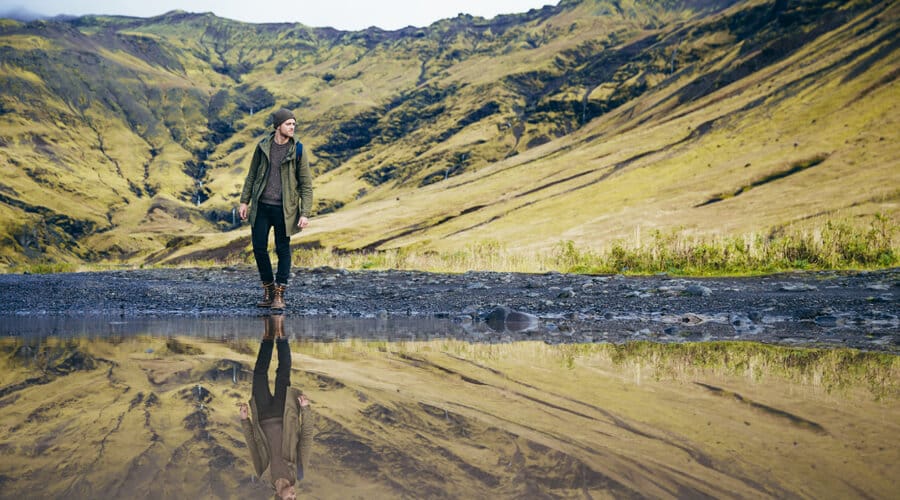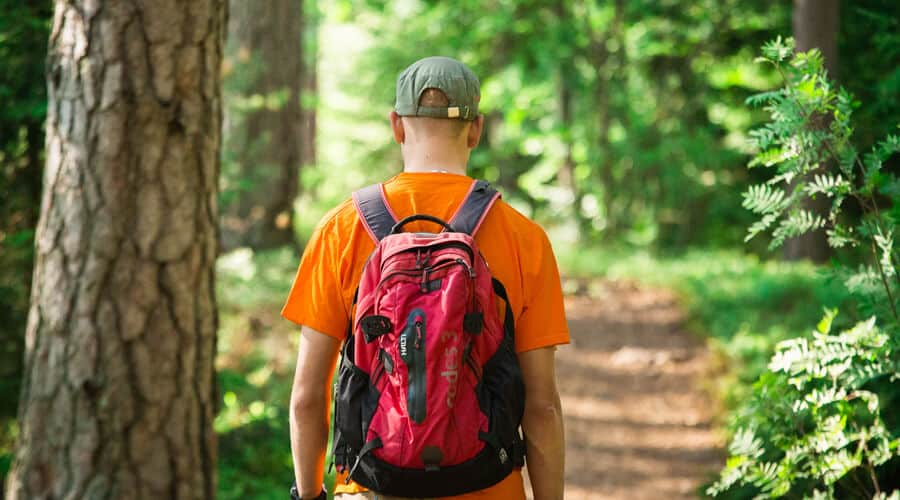Traveling is a fantastic way to learn and connect with the world. Also, there is nothing that beats seeing friends and family in person. But traveling can take a heavy toll on the environment, well beyond carbon emissions and single-use plastics. It’s important to remember and consider the following sustainable travel tips because the environmental impact of traveling extends beyond just carbon emissions.
It can put enormous pressure on local resources, including water, and cause land degradation. Thus, it’s critical to travel as sustainably as possible.
Ecotourism or sustainable travel require thinking about the entire process: packing light, greener transport, eco-friendly accommodation, and supporting the local economy.
In addition to minimizing your footprint, visit less popular destinations or go during off-peak season.
Trying to make your adventure as sustainable and green as possible doesn’t always mean hiking in the woods and camping.
Nor is it as simple as buying earth-friendly, biodegradable products. Instead, it requires thinking about the entire trip, from where you are going to how you’ll pack.
I’ve talked to experts and gathered tips to help green up your travel from start to finish.
Choose Your Destination Wisely
It is crucial to consider your destination when traveling for pleasure. But it takes far more consideration than picking nature over cities such as Las Vegas.
Unfortunately, the great outdoors is being ruined by popularity and tourists behaving badly.
So much so that some places have resorted to banning visitors, at least temporarily, such as Komodo Island and Fjaðrárgljúfur Canyon.
Choosing where and when to go impacts:
- Local water supply
- Local energy, food, and raw materials
- Waste management
- Land degradation
- Wildlife population
- Development
- Pollution
- Ability to create a sustainable local economy
Visit Popular Places Off Season Or Skip Them

Visiting popular places can be hard on the environment and the community. Ideally, it’s best to spread the wealth and environmental burden by visiting lesser-known destinations.
But if seeing a particular place or landmark has been a dream, visit during the off-season.
Too many visitors at once put enormous pressure on local resources such as water, erode the landscape, and cause expansion of development which prices out locals.
Johann Stadler, who runs the sustainable and environmentally friendly Mdumbi Backpackers on the Wild Coast of South Africa, is all too familiar with this problem.
He points out that new developments can cause “huge aesthetic pollution, but also there are no environmental impact assessments done on these or environmental management plans.”
He worries that for the local indigenous population, “there will be very little prime land for them left one day.”
It isn’t just new buildings that are causing strain. Parking lots are often expanded or added just to accommodate a brief “high tourism” time of year.
These cause “heat islands” in urban areas, hurting humans and wildlife. Meanwhile, it’s causing damage to National Parks, eroding the natural landscape we claim to love.
Lastly, local communities do better when tourists spread out their visits throughout the year rather than coming in peak season.
Consider Mudmbi Backpackers, who ensure they give “55% of our business to our local staff and community.”
In addition, all the money for their activities goes “100% to the local operator, for example, our kayak guides, or hiking guides, massages, shuttles, bread baking [are businesses that] belong to the operators.”
These local businesses can provide stable and sustainable income if people consider visiting during the off-season.
It also helps prevent jobs from being seasonable, giving people a livelihood throughout the year.
Eco-Friendly Accommodation
Locating eco-friendly accommodations like eco-lodges can require tons of research. But some places can help. For example, Ecobnb.com helps European travelers find places to stay that meet their values. Places have to meet five of the ten criteria to be featured on their site:
- 100% renewable energy
- Organic or local food
- Water flow reducers
- Ecological cleaning products
- More than 80% of waste recycling
- Recovery and reuse of rainwater
- Energy saving lights
- Solar thermal panels for hot water
- Car-free accessibility
- Green building
“The criteria have been studied and developed during the European project Ecodots,” Silvia Ombellini of Ecobnb explained.
“The accommodations that meet all 10 criteria have the maximum ranking (5 green leaves),” and those that meet the bare minimum of five get “2.5 green leaves.”
But the local community is also an essential consideration when choosing accommodation.
As John Standler of Mdumbi Backpackers put it, “I feel that running a business and not trying to find ways to incorporate your staff and local community as much as possible is bound to have very negative effects in the long run,” he said.
While Mudumbi Backpackers tries to encourage guests to minimize their environmental impact, Stadler has found that working with the local community has made them “aware of their environment and the need to preserve it for the future.”
Thus, look to stay in places that care and invest in the communities they do business.

Green Transportation
The greenest transport is walking out your front door and using those feet. However, that won’t get you very far in a hurry. Greener ways to travel are:
- Public transport, such as local bus, subway, or rail systems rather than taxies or driving
- Using a train or bus instead of air travel
- Bicycle
- Renting or borrowing a scooter or motorcycle rather than a car
- Renting an electric vehicle
When possible, choose the transport option that has the least harm. For example, driving an SUV will emit .68 lbs. of Co2 per mile if a person travels alone.
In comparison, the average motorcycle puts out .40 lbs. of Co2 per mile. That sounds great until you consider that taking a transit bus only puts out .37 lbs., the train .13lbs, and a tour bus .10lbs.
Can I Offset Emissions?
Ride a plane, plant a tree: offsetting emissions attracts travelers and businesses. But does it actually work?
Unfortunately, the answer is more no than yes. Because while initiatives such as planting trees can be good things, it isn’t better than not cutting down a tree in the first place.
Nor does it address the root of the problem.
“Ultimately,” writes Fiona Harvey, an environmental correspondent, “we must reduce emissions drastically to prevent catastrophe, and offsetting alone will never achieve that.”
Bonnie Waring, a senior lecturer at Grantham Institute, conducted a review of this complex problem, and the findings agree with Harvey’s statement.
As Waring explained in The Conversation, even if we had the maximum number of trees our planet could hold, “we’d sequester enough carbon to offset about ten years.”
That would be it; no new emissions could be offset as we continued to put them out into the air.
So, by all means, plant trees, but do that in addition to minimizing your carbon emission output.
Responsible Tourism Activities
Being a responsible tourist also means caring about the community you’re visiting. Of course, minimize your:
- Waste
- Carbon emissions
- Use water sparingly
- Turn lights off when not needed
But also think about local businesses, artisans, and farmers. Buying directly from artists and farmers is better than buying from chain grocery stores or mass-produced tourist trinkets often manufactured elsewhere.
It’s also a great idea to try local brands of food rather than your familiar home favorites. Eat in season, too.
For example, Silvia Ombellini believes that when dining out, “it is possible to be eco-friendly.”
She suggests:
- Preferring vegetarian menus
- Choosing local and eco-friendly restaurants rather than chains
- Ask for a doggy bag rather than waste food and use your leftovers for another meal
Also, activities that align with eco-friendly practices, such as eco-yoga retreats, have become more popular in recent years. These types of retreats promote physical and mental wellbeing and foster a deep connection with nature.
They often incorporate sustainable living practices, like organic farming, renewable energy use, and waste reduction. Participants get the chance to learn about environmental conservation while enjoying a peaceful and rejuvenating experience.
Also, when booking with a tour operator, consider more than good reviews of the experience. Think about:
- Who owns the tour operation? Local? Or is it a corporation?
- How many jobs is the tour creating or helping?
- How much of the booking fee is going to the workers?
Green Packing Tips
Sustainable travel begins at home, starting with how you pack.
Sustainable Travel Gear
The most sustainable travel gear is using what you already have or can borrow. The less junk we add to our planet, the better.
If you must buy, look out for second-hand deals, garage sales, estate sales, or online listings. But if you have to buy, ensure your gear is:
- High-quality (check the seams, zips, and other closures)
- Made from sustainable or recycled materials when possible
- Lightweight
You don’t have to buy the most upmarket, but you do need to consider longevity and usefulness. For example, I bought a hiking backpack ten years ago.
I researched brands and tried on many different backpacks. While they were not the most expensive, I paid attention to the details. Thus, it is still going strong.
In addition, don’t avoid using certain items because they look less eco-friendly if you already own them. For example, buying a new cotton bag is hard on the environment.
So yes, we’re all trying to avoid plastic bags, but they can sneak into your life. If you already have them, use them and use them again.
They can fold up small, be lightweight, and make excellent dirty clothes bags, shoe bags, or grocery bags when traveling.

Biodegradable Toiletries Don’t Biodegrade In Water
When packing your toiletries, it is always great to consider the following:
- Biodegradable or recyclable package
- Cruelty-free and vegan products
- Biodegradable cleansers and detergents
- Sea-safe sunscreen
However, if you are camping, remember biodegradable cleansers and detergents don’t biodegrade in water.
You need to rinse off on the soil, not in a waterway, as the microorganisms in the soil are essential for the soap to break down.
Doing otherwise pollutes rivers, lakes, and streams and harms aquatic plants and wildlife.
Packing Light
The heavier your bag, the more space and fuel you use. Thus, when visiting friends and family, I always call ahead and see what I can borrow.
Impossible to borrow? Consider using San Francisco resident Ann Snider’s trick: “I rent clothes if I’m taking trips to places with a much different climate than my home as I know I will not utilize them again once I return.”
Then, she takes the return envelope with her to mail it off directly from her final destination. That way, she always has extra space in her luggage to transport anything she’s acquired, such as gifts.
In addition, consider packing reusable water bottles and utensils so you don’t use single-use while traveling.
Conclusion
Eco-travel, like many environmental and sustainable goals, requires a holistic viewpoint.
Consider:
- Where and when you travel
- Transport
- Packing (weight and size)
- Where you stay
- Minimizing waste and impact on local resources
- Supporting the local community
Wishing you happy, green, and sustainable adventures.



